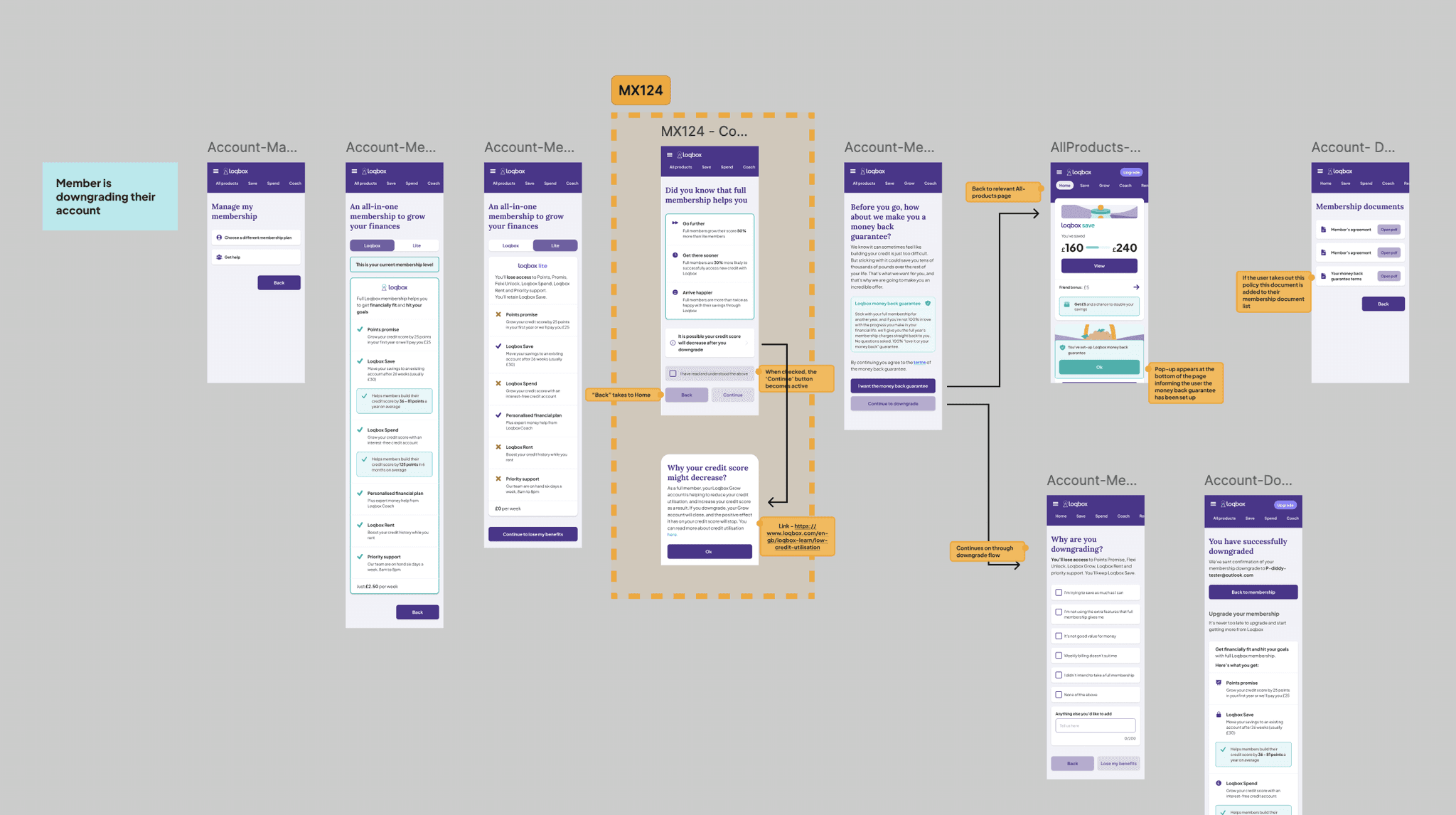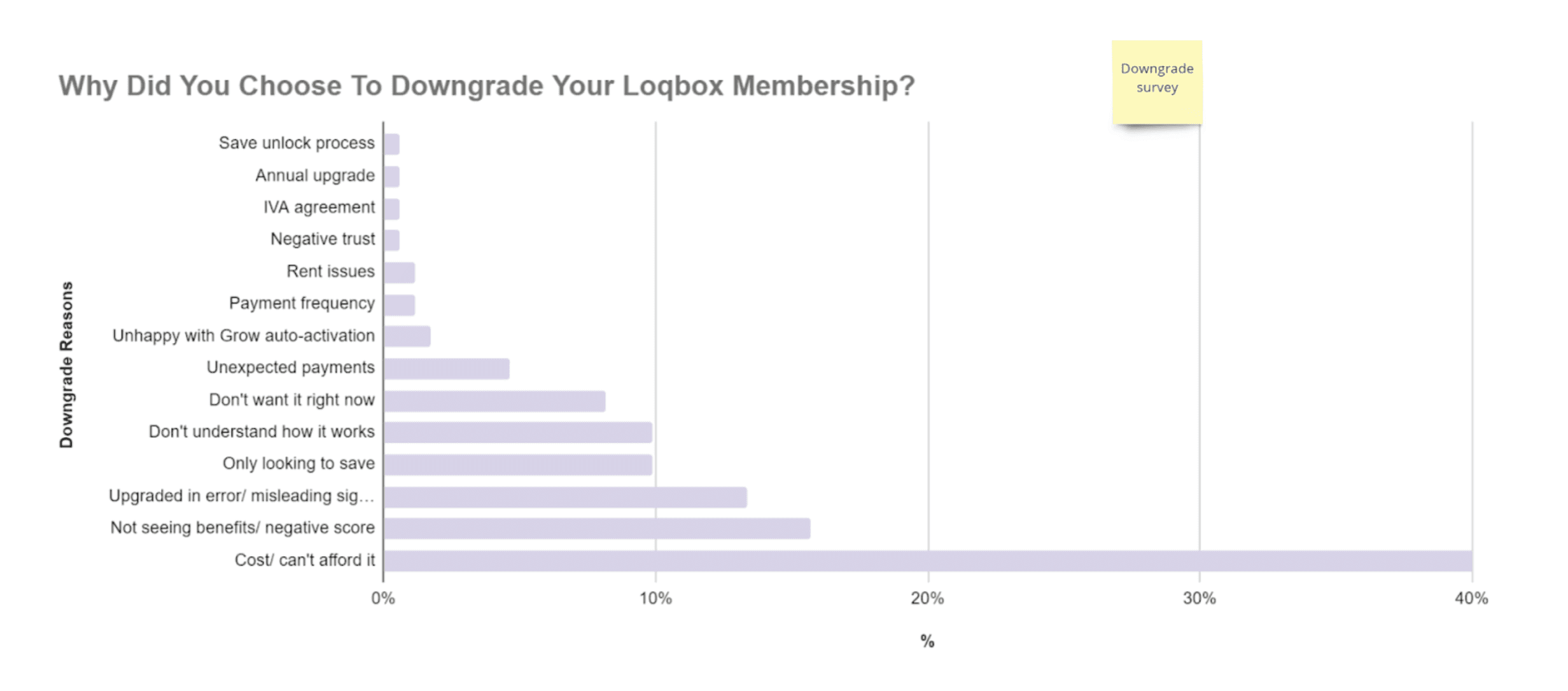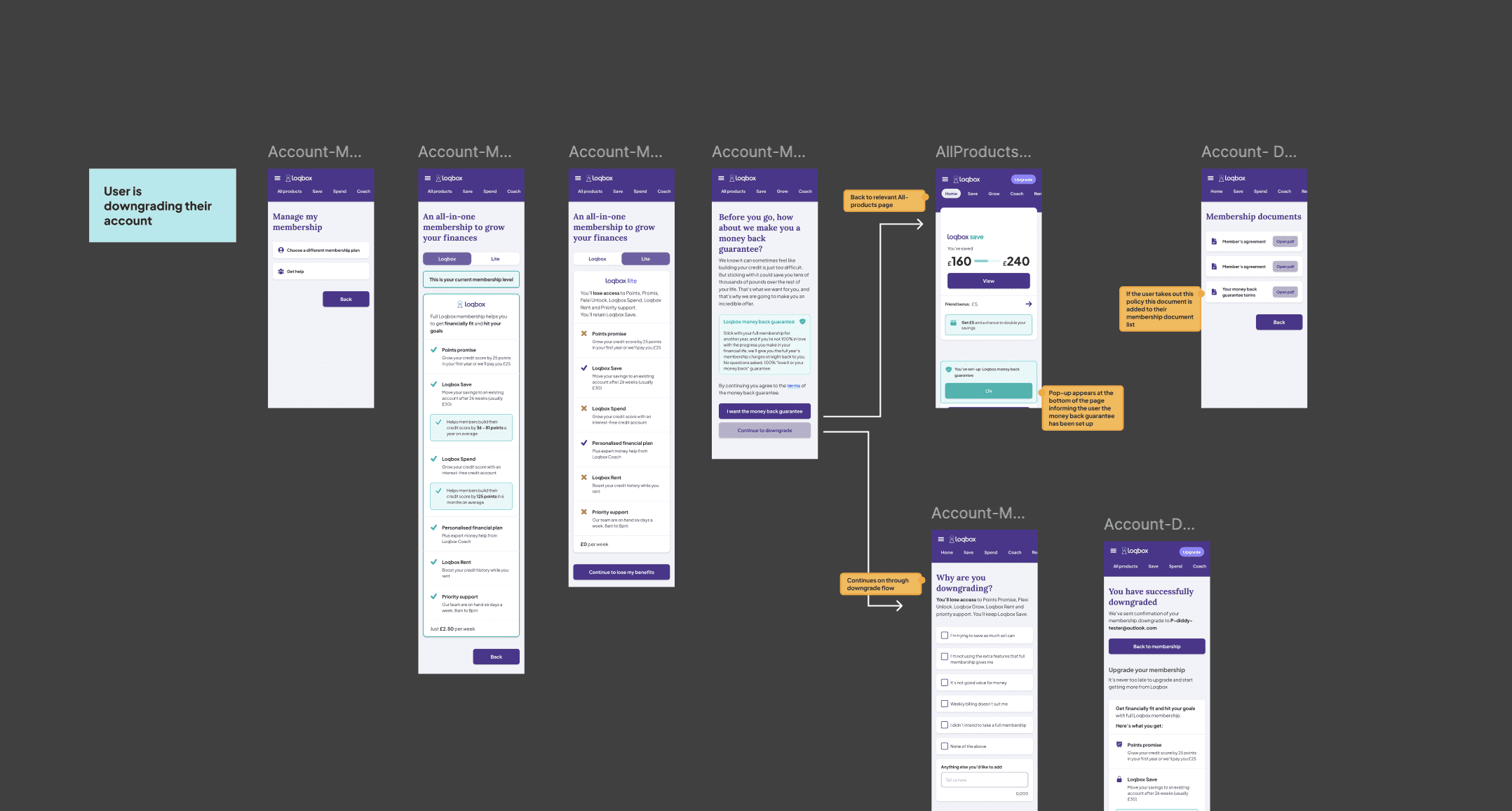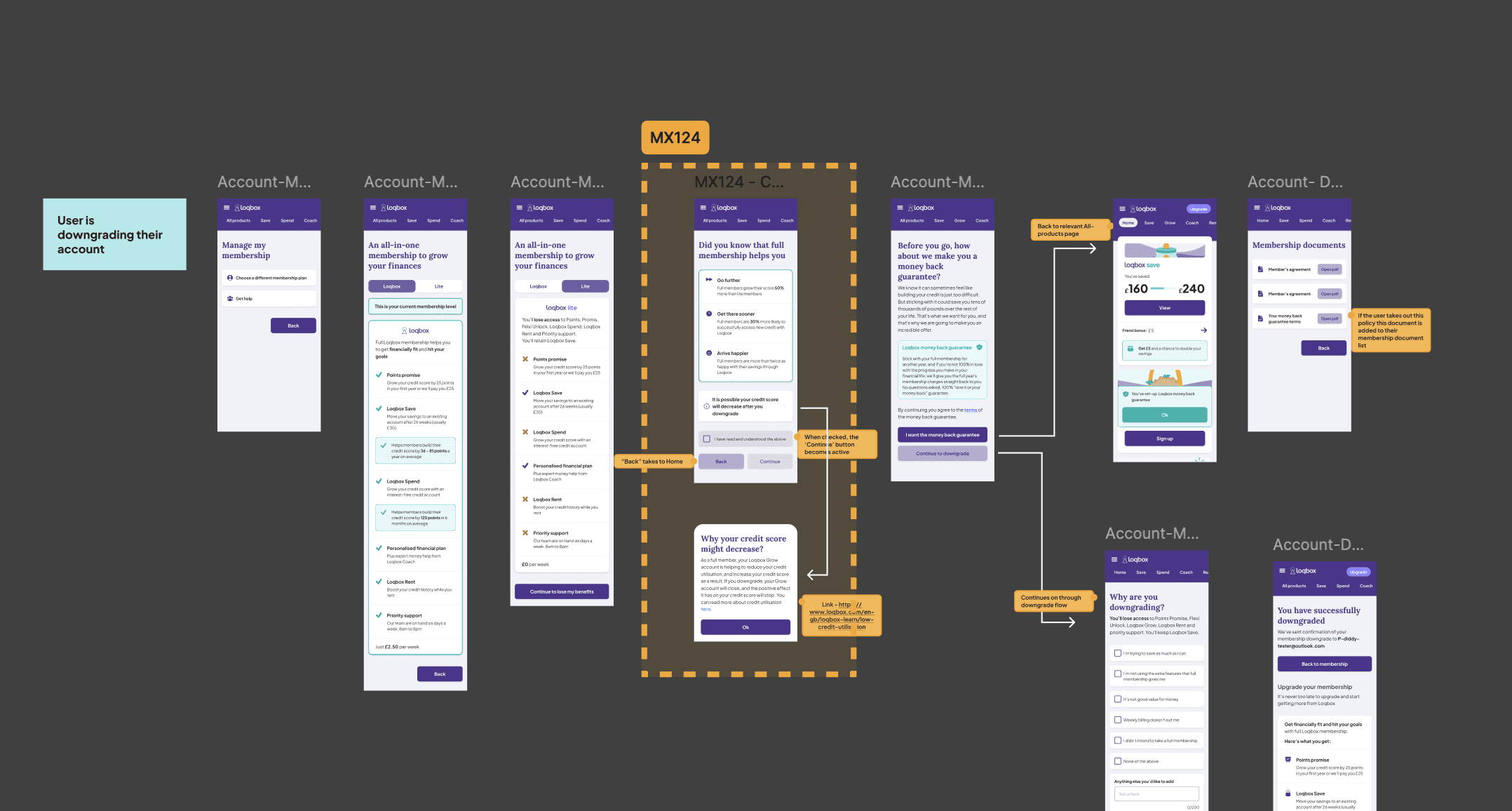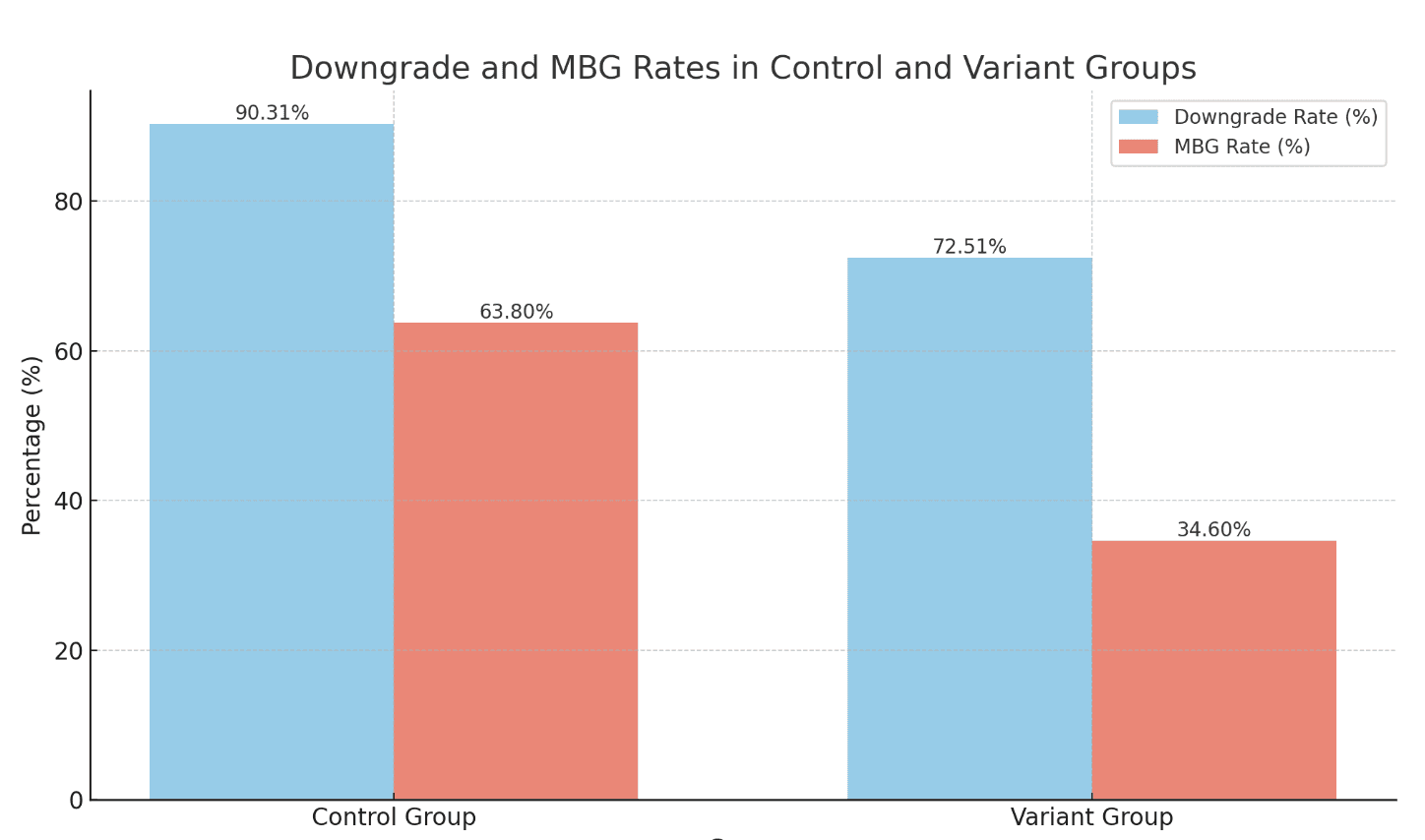Retention through clarity : Re-articulating the membership benefits in the downgrade journey
Duration
2 Weeks
Industry
Fintech (Savings and Credit Building)
Resources/Tools
Figma, Miro, and Count
Role
Product Designer
User Research, Interaction, Visual design, Prototyping & Testing
Background
Loqbox is a UK-based fintech company specializing in helping individuals build credit and save money. Through its unique approach, Loqbox allows users to save money in a way that also builds their credit score, empowering them to access better financial products in the future.
Loqbox offers two membership options: Full Membership and Lite Membership. Full members enjoy a wider range of benefits, including faster credit score growth and enhanced customer support. Learn more about Loqbox here
Overview
Challenge
Members in the process of downgrading their membership reported limited understanding of the benefits they received under the full membership plan. Data revealed a consistent trend: users frequently downgraded due to either lack of clarity on membership benefits or unawareness that they were subscribed to a full membership. This created a need to address knowledge gaps in the journey, with the potential to reduce downgrades and ultimately improve customer satisfaction.
Supporting research
Key Insights from Downgrade Research
Research identified two main reasons behind downgrades:
Benefit Clarity: Many users were unclear about the specific benefits associated with full membership.
Membership Awareness: Some members didn’t realize they had full membership and downgraded without understanding what they were giving up.
These insights highlighted the need for a clear and persuasive presentation of membership benefits to encourage users to reconsider downgrading.
Hypothesis
If members clearly understand the comparative benefits of Full vs. Lite membership at the point of downgrade, then they will be more likely to retain their full membership. Hypothesized that by including a screen comparing these memberships directly, we could improve the retention rate of full members and reinforce the value of membership fees.
Approach
Proposed solution
To address this challenge, I designed an additional screen within the downgrade flow that showcased three key benefits of full membership:
Go Further: Full members grow their credit score 50% more than lite members.
Get There Sooner: Full members are 30% more likely to successfully access new credit through Loqbox.
Arrive Happier: Full members are more than twice as satisfied with their savings journey through Loqbox.
These benefits were crafted to deliver both practical and emotional value, ensuring users understood not only the functional advantages but also the increased satisfaction associated with full membership.
Tools used
Figma: For screen design and prototype iterations.
Miro: To document research insights and share design rationale with stakeholders.
Experiment Design
Implementation
Designed a streamlined comparison screen to maximize clarity with minimal friction in the downgrade flow.
A/B Testing Setup
We conducted an A/B test between two groups:
Control Group: Experienced the original downgrade journey. (below)
Variant Group: Saw the new benefits comparison screen before completing the downgrade process. (below)
The variant overview - Middle screen as a new addition between the flow.
Timeline and Key Details
Go-Live Date: September 4, 2023
End Date: September 18, 2023
Total Duration: 14 Days
Traffic: 100% of users in the downgrade journey participated (50% to the Control & 50% to the Variant)
Journey: Downgrade journey
Impact & Results
The MX124 experiment yielded significant improvements in user retention and engagement:
Downgrade Rate: Dropped from 90.31% in the control group to 72.51% in the variant group, confirming the screen’s effectiveness in retaining users.
Money Back Guarantee (MBG) Rate: Decreased from 63.8% in the control group to 34.6% in the variant group. This indicated that most users in the variant group chose to keep their full membership after viewing the new screen.
Revenue Impact
The MX124 experiment led to a material improvement in weekly and annual revenue through increased retention and reduced refund behavior. Here's how it breaks down:
1. Baseline Weekly Revenue (Control Group)
Total Members: 194,564
Weekly Subscription Fee: £2.50
Baseline Retention Rate (Control): 9.69% (100% - 90.31%)
Paying Members Retained Weekly (Control): 18,856
Baseline Weekly Revenue:
18,856 × £2.50 = £47,140
2. Variant Weekly Revenue
Retention Rate (Variant): 27.49% (100% - 72.51%)
Paying Members Retained Weekly (Variant): 53,459
Variant Weekly Revenue:
53,459 × £2.50 = £133,647.50
3. Uplift from Experiment
Additional Paying Members Retained Weekly:
53,459 − 18,856 = +34,603Additional Weekly Revenue:
34,603 × £2.50 = £86,507.50Percentage Increase in Weekly Revenue:
(£86,507.50 ÷ £486,410) × 100 = 17.78%
The MX124 variant drove a 17.78% increase in weekly revenue compared to the baseline — a direct result of retaining more paying members and reducing early exits.
4. Annualized Revenue Impact
Weekly Uplift: £86,507.50
Annual Impact:
£86,507.50 × 52 weeks = £4,498,390
Here's a chart of annual revenue comparison: Baseline vs Variant
Conclusion
The MX124 experiment proved that small, strategic interventions in the downgrade journey can drive outsized business results. By introducing a redesigned screen with clearer messaging and improved user experience, we successfully:
Reduced unnecessary churn
Boosted user confidence in the product
Delivered a £4.5M annual revenue uplift without additional acquisition costs
This test not only validated our hypothesis around behavioral nudging and value reinforcement, but also highlighted how product design can directly impact bottom-line metrics.
As a result, the variant has been rolled out to 100% of traffic and is now live in production.
This outcome sets a strong precedent for future optimizations focused on user retention and monetization, without needing to touch acquisition levers.
